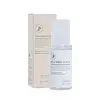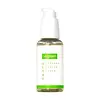What's inside
What's inside
 Key Ingredients
Key Ingredients

 Benefits
Benefits

 Concerns
Concerns

No concerns
 Ingredients Side-by-side
Ingredients Side-by-side

Melaleuca Alternifolia Leaf Water
AntimicrobialButylene Glycol
HumectantGlycerin
HumectantWater
Skin ConditioningPropanediol
Solvent1,2-Hexanediol
Skin ConditioningPentylene Glycol
Skin ConditioningBetaine
HumectantPolyglyceryl-10 Laurate
Skin ConditioningMelaleuca Alternifolia Leaf Extract
PerfumingDipotassium Glycyrrhizate
HumectantPanthenol
Skin ConditioningSodium Hyaluronate
HumectantSalix Nigra Bark Extract
Skin ProtectingSalix Alba Bark Extract
AstringentMacadamia Integrifolia Seed Oil
Skin ConditioningCaprylyl Glycol
EmollientArginine
MaskingXanthan Gum
EmulsifyingCarbomer
Emulsion StabilisingMelaleuca Alternifolia Leaf Oil
AntioxidantMelaleuca Alternifolia Leaf Water, Butylene Glycol, Glycerin, Water, Propanediol, 1,2-Hexanediol, Pentylene Glycol, Betaine, Polyglyceryl-10 Laurate, Melaleuca Alternifolia Leaf Extract, Dipotassium Glycyrrhizate, Panthenol, Sodium Hyaluronate, Salix Nigra Bark Extract, Salix Alba Bark Extract, Macadamia Integrifolia Seed Oil, Caprylyl Glycol, Arginine, Xanthan Gum, Carbomer, Melaleuca Alternifolia Leaf Oil
Melaleuca Alternifolia Leaf Extract
PerfumingButylene Glycol
HumectantGlycerin
HumectantWater
Skin ConditioningGlycereth-26
Humectant1,2-Hexanediol
Skin ConditioningCentella Asiatica Extract
CleansingCaprylyl Glycol
EmollientHydroxyacetophenone
AntioxidantPentylene Glycol
Skin ConditioningXanthan Gum
EmulsifyingEthylhexylglycerin
Skin ConditioningAllantoin
Skin ConditioningBetaine
HumectantDipotassium Glycyrrhizate
HumectantSodium Hyaluronate
HumectantHouttuynia Cordata Extract
Skin ConditioningCamellia Sinensis Leaf Extract
AntimicrobialMadecassoside
AntioxidantAsiaticoside
AntioxidantBeta-Glucan
Skin ConditioningAsiatic Acid
Skin ConditioningMadecassic Acid
Skin ConditioningMelaleuca Alternifolia Leaf Extract, Butylene Glycol, Glycerin, Water, Glycereth-26, 1,2-Hexanediol, Centella Asiatica Extract, Caprylyl Glycol, Hydroxyacetophenone, Pentylene Glycol, Xanthan Gum, Ethylhexylglycerin, Allantoin, Betaine, Dipotassium Glycyrrhizate, Sodium Hyaluronate, Houttuynia Cordata Extract, Camellia Sinensis Leaf Extract, Madecassoside, Asiaticoside, Beta-Glucan, Asiatic Acid, Madecassic Acid
 Reviews
Reviews

Ingredients Explained
These ingredients are found in both products.
Ingredients higher up in an ingredient list are typically present in a larger amount.
1,2-Hexanediol is a synthetic liquid and another multi-functional powerhouse.
It is a:
- Humectant, drawing moisture into the skin
- Emollient, helping to soften skin
- Solvent, dispersing and stabilizing formulas
- Preservative booster, enhancing the antimicrobial activity of other preservatives
Betaine is a common humectant (a substance that promotes retention of moisture). It's known to be gentle on the skin and can help balance hydration.
This ingredient is best for improving hydration and soothing irritated skin. Studies also show it helps even out skin tone.
Fun fact: Betaine is naturally created in the skin and body. The kind found within cosmetic products can be either plant-derived or synthetic.
Another name for betaine is trimethylglycine.
Learn more about BetaineButylene Glycol (or BG) is used within cosmetic products for a few different reasons:
Overall, Butylene Glycol is a safe and well-rounded ingredient that works well with other ingredients.
Though this ingredient works well with most skin types, some people with sensitive skin may experience a reaction such as allergic rashes, closed comedones, or itchiness.
Learn more about Butylene GlycolCaprylyl Glycol is a humectant and emollient, meaning it attracts and preserves moisture.
It is a common ingredient in many products, especially those designed to hydrate skin. The primary benefits are retaining moisture, skin softening, and promoting a healthy skin barrier.
Though Caprylyl Glycol is an alcohol derived from fatty acids, it is not the kind that can dry out skin.
This ingredient is also used as a preservative to extend the life of products. It has slight antimicrobial properties.
Learn more about Caprylyl GlycolDipotassium Glycyrrhizate comes from licorice root.
Extracts of licorice have demonstrated to have antibacterial, anti‐inflammatory, antiviral, antioxidant properties.
One component, glabridin, has extra potent antioxidant and soothing properties. It has also been found to block pigmentation from UVB rays in guinea pigs.
Licorice Root also contains a flavonoid. Flavonoids are a natural substance from in plants. Flavonoids also have antioxidant properties.
Another component, glycyrrhizin, has been found to have anti-inflammatory and antimicrobial benefits. This may make licorice root extract effective at treating acne. However, more research is needed to support this.
Liquiritin is one of the flavone compounds found in licorice. It has been found to help lighten skin by preventing tyrosinase from reacting with tyrosine. When the two react, protein is converted to melanin. Melanin is the substance in your body that gives your features pigmentation.
Licorice root is native to Southern Europe and Asia. It has been used in traditional Chinese medicine to help with respiratory issues.
Learn more about Dipotassium GlycyrrhizateGlycerin is already naturally found in your skin. It helps moisturize and protect your skin.
A study from 2016 found glycerin to be more effective as a humectant than AHAs and hyaluronic acid.
As a humectant, it helps the skin stay hydrated by pulling moisture to your skin. The low molecular weight of glycerin allows it to pull moisture into the deeper layers of your skin.
Hydrated skin improves your skin barrier; Your skin barrier helps protect against irritants and bacteria.
Glycerin has also been found to have antimicrobial and antiviral properties. Due to these properties, glycerin is often used in wound and burn treatments.
In cosmetics, glycerin is usually derived from plants such as soybean or palm. However, it can also be sourced from animals, such as tallow or animal fat.
This ingredient is organic, colorless, odorless, and non-toxic.
Glycerin is the name for this ingredient in American English. British English uses Glycerol/Glycerine.
Learn more about GlycerinMelaleuca Alternifolia Leaf Extract comes from the Tea Tree, Melaleuca alternifolia, Myrtaceae. This tea tree is native to Australia.
Tea Leaf extract contains antimicrobial and anti-acne properties.
This ingredient has perfuming properties and contains linalool and limonene. These fragrance and terpinen components can cause skin sensitivity.
Learn more about the benefits of Tea Tree Oil here.
Learn more about Melaleuca Alternifolia Leaf ExtractPentylene glycol is typically used within a product to thicken it. It also adds a smooth, soft, and moisturizing feel to the product. It is naturally found in plants such as sugar beets.
The hydrophilic trait of Pentylene Glycol makes it a humectant. As a humectant, Pentylene Glycol helps draw moisture from the air to your skin. This can help keep your skin hydrated.
This property also makes Pentylene Glycol a great texture enhancer. It can also help thicken or stabilize a product.
Pentylene Glycol also acts as a mild preservative and helps to keep a product microbe-free.
Some people may experience mild eye and skin irritation from Pentylene Glycol. We always recommend speaking with a professional about using this ingredient in your routine.
Pentylene Glycol has a low molecular weight and is part of the 1,2-glycol family.
Learn more about Pentylene GlycolSodium Hyaluronate is hyaluronic acid's salt form. It is commonly derived from the sodium salt of hyaluronic acid.
Like hyaluronic acid, it is great at holding water and acts as a humectant. This makes it a great skin hydrating ingredient.
Sodium Hyaluronate is naturally occurring in our bodies and is mostly found in eye fluid and joints.
These are some other common types of Hyaluronic Acid:
Learn more about Sodium HyaluronateWater. It's the most common cosmetic ingredient of all. You'll usually see it at the top of ingredient lists, meaning that it makes up the largest part of the product.
So why is it so popular? Water most often acts as a solvent - this means that it helps dissolve other ingredients into the formulation.
You'll also recognize water as that liquid we all need to stay alive. If you see this, drink a glass of water. Stay hydrated!
Learn more about WaterXanthan gum is used as a stabilizer and thickener within cosmetic products. It helps give products a sticky, thick feeling - preventing them from being too runny.
On the technical side of things, xanthan gum is a polysaccharide - a combination consisting of multiple sugar molecules bonded together.
Xanthan gum is a pretty common and great ingredient. It is a natural, non-toxic, non-irritating ingredient that is also commonly used in food products.
Learn more about Xanthan Gum